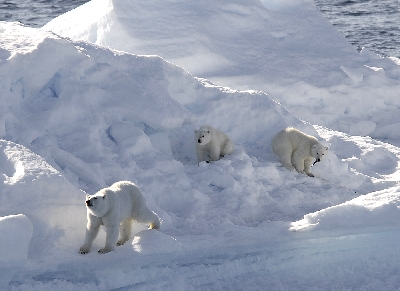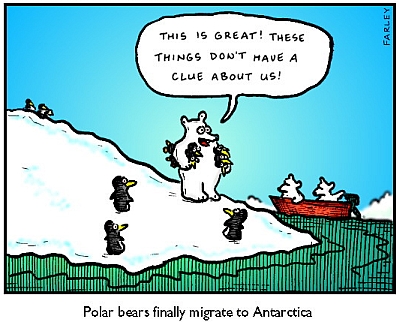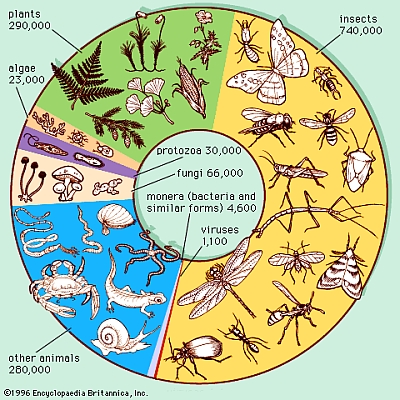4. Invasive Species in the Ocean
Endemic and invasive species
What would happen if a polar bear family was brought to the Antarctic? (Seriously - Think about it for a moment!)

As you probably know, polar bears live in the Arctic. They are adapted to extremely low temperatures.
To avoid overheating they move slowly.
As temperatures in the Antarctic are similar to what polar bears are used to, they would probably be able to cope with the climate.
But how about their nutrition?
Polar bears feed mainly on seals. They need an average of 2 kg (4.4 lb.) of fat per day to survive. The most common method of seal hunting
is the so called 'still hunting' where the polar bear remains motionless beside a breathing hole waiting for a seal to surface.
This method is time consuming and needs some endurance.
Brought to the Antarctic, our polar bear family would thus possibly start to hunt penguins as they are moving relatively slow on land. The penguin populations would decrease eventually while the polar bear species would thrive. In a few decades the penguins in the Antarctic would be extinct.

All animals and plants live in specific habitats (environments) which have distinct physical, chemical and biological characteristics that are different from the surrounding environments. The polar bear prefers temperatures below the freezing point. The common dolphin however needs a water temperature which does not fall below 10° C in the winter; corals even need minimum temperatures of 20° C to survive. The European shore crab can handle salty or brackish water, whereas some sea grass species need high salinity for optimal growth.
Species that originate from another location are called alien species. In their home environments, organisms live in balance with their predators, and are controlled by diseases and other ecosystem interactions. Brought to a new environment, they start interacting with the local ecosystem. Many species establish in a new habitat with only few disruptions. But often they fundamentally change the structure and function of the ecosystem. Alien species are often able to survive better than native species, which results in increased competition among native species. If an alien species is more dominant, its native counterparts may be reduced in number or even be put at risk of extinction. At this point alien species are described as being harmful or invasive.
The polar bear is endemic to the Arctic. Brought to the Antarctic he would become an alien species. The moment he started eating penguins he would adversely change the environment which would make him an invasive species.
Among the 1.75 million animal and plant species known to inhabit the earth, approximately 230,000 species live in the oceans.

Source: Encyclopædia Britannica Online
